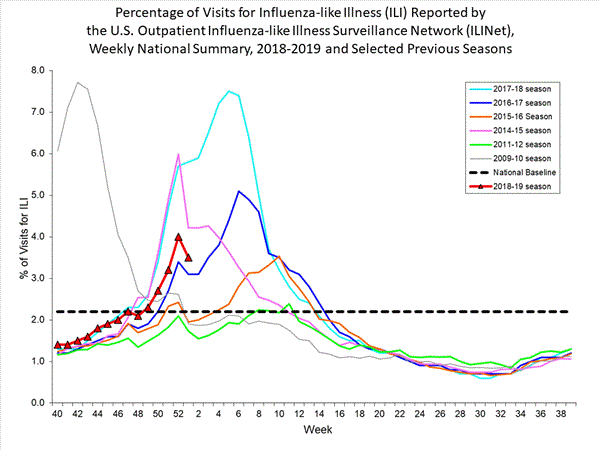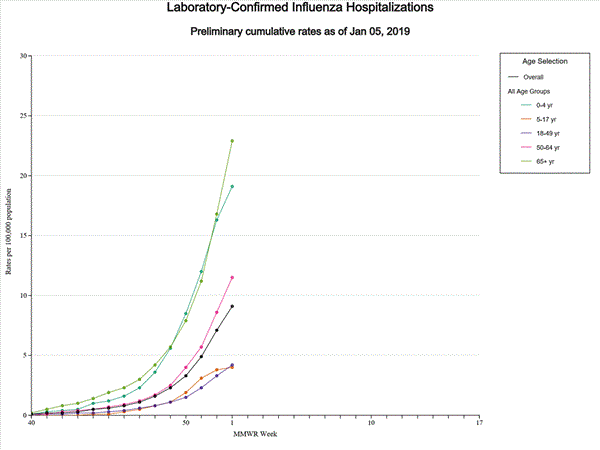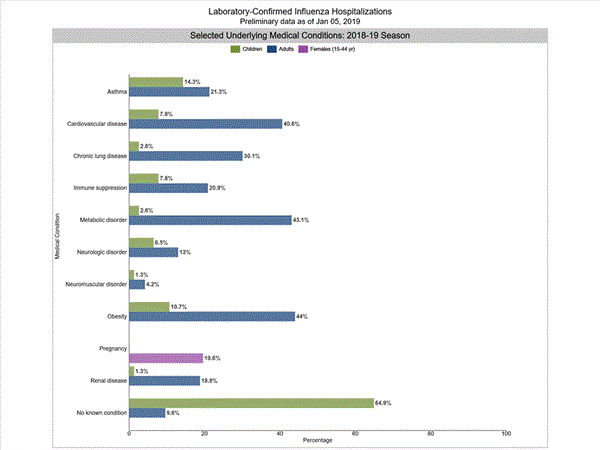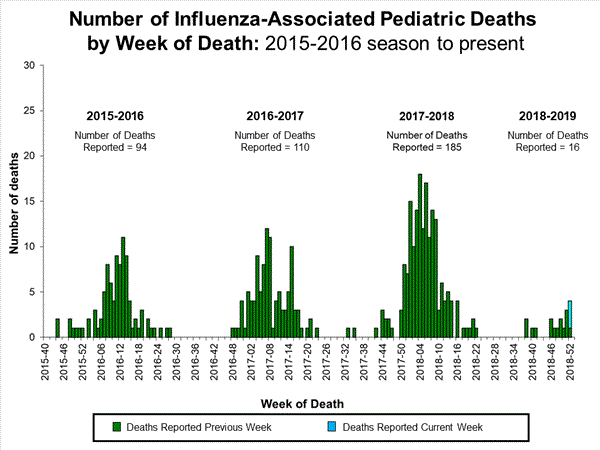2018-2019 Influenza Season: Week 1 ending January 5, 2019
January 12th, 2019CDC estimates that as of January 5:
- 6.2 to 7.3 million people have been sick with flu,
- 2.9 to 3.5 million people have been to the doctor because of flu, and
- 69,300 to 83,500 people have been hospitalized because of flu.
- Viral Surveillance: The percentage of respiratory specimens testing positive for influenza viruses in clinical laboratories decreased slightly. Influenza A viruses have predominated in the United States since the beginning of October. Influenza A(H1N1)pdm09 viruses have predominated in most areas of the country, however influenza A(H3) viruses have predominated in the southeastern United States (HHS Region 4).
- Virus Characterization: The majority of influenza viruses characterized antigenically and genetically are similar to the cell-grown reference viruses representing the 2018–2019 Northern Hemisphere influenza vaccine viruses.
- Antiviral Resistance: All viruses tested show susceptibility to the neuraminidase inhibitors (oseltamivir, zanamivir, and peramivir).
- Influenza-like Illness Surveillance:The proportion of outpatient visits for influenza-like illness (ILI) decreased from 4.0% to 3.5%, but remains above the national baseline of 2.2%. All 10 regions reported ILI at or above their region-specific baseline level.
- ILI State Activity Indictor Map: New York City and 15 states experienced high ILI activity; 12 states experienced moderate ILI activity; the District of Columbia, Puerto Rico and eight states experienced low ILI activity; and 15 states experienced minimal ILI activity.
- Geographic Spread of Influenza: The geographic spread of influenza in 30 states was reported as widespread; Puerto Rico and 17 states reported regional activity; two states reported local activity; the District of Columbia, the U.S. Virgin Islands and one state reported sporadic activity; and Guam did not report.
- Influenza-associated Hospitalizations A cumulative rate of 9.1 laboratory-confirmed influenza-associated hospitalizations per 100,000 population was reported. The highest hospitalization rate is among adults 65 years and older (22.9 hospitalizations per 100,000 population).
- Pneumonia and Influenza Mortality: The proportion of deaths attributed to pneumonia and influenza (P&I) was below the system-specific epidemic threshold in the National Center for Health Statistics (NCHS) Mortality Surveillance System.
- Influenza-associated Pediatric Deaths: Three influenza-associated pediatric deaths were reported to CDC during week 1.






